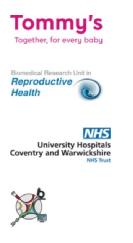Digital Endometrium Function Test - (d)EFT

Patient Information
Please ensure you read all of the information contained in the pages below

Our aim is to pinpoint the defects in the womb lining that cause implantation failure and pregnancy loss.
The test results inform which treatment is most effective in improving the womb lining for pregnancy. Funded by Tommy’s Baby Charity, we developed the Digital Endometrial Function Test - (d)EFT - which incorporates three measurements outlined below.
The (d)EFT provides unique information on the preparedness of the womb lining for pregnancy. The results will guide Professor Brosens when advising on a personalised treatment plan.
1
The (d)EFT measures if the womb lining is adequately prepared for embryo implantation and pregnancy.
During the implantation window, the womb lining prepares simultaneously to breakdown at menstruation and to support the embryo and placenta throughout pregnancy. Using recently discovered biomarkers of key cell population, the (d)EFT measures if the womb lining is;
- Prone to breakdown in pregnancy (causing miscarriage)
- Too robust for embryo implantation (causing implantation failure)
- Well-balanced for implantation and pregnancy.
We will calculate a score for your womb lining based on a reference range generated from over 850 samples. As the balance of these cell populations will vary each day of the cycle, we adjust your score to the day of the cycle when the biopsy was taken from the results of your home ovulation kit.
Our tests use state-of-the-art digital PCR technology.
2
The (d)EFT also measures the ‘molecular time’ in the womb lining.
In each cycle, hormones produced by the ovaries induce rapid changes in the womb lining that result in a short window of approximately 3 to 4 days during which an embryo can implant. This is known as ‘the implantation window’.
Some studies have shown that the window of implantation may shift, meaning that the womb lining is not ready for embryo implantation when expected.
By combining digital PCR technology and mathematical modelling, we can calculate accurately the day of cycle in the womb lining.
We then compare the calculated day of the cycle with the result from your home ovulation test.
Your results will then inform you if preparation of the womb lining for pregnancy is normal, delayed, or advanced.
3
The (d)EFT incorporates the ‘uterine natural killer (uNK) cell test’.
We have offered uNK cell testing since 2012.
Our research has shown that some women who have had previous miscarriages or implantation failures may have abnormal levels of uNK cells near the surface of the womb lining.
The abundance of uNK cells in the womb lining increases steadily from ovulation to menstruation.
We have developed an accurate method of quantifying uNK cells using digital image analysis and can compare your result to a reference range generated from over 2,000 samples.
High uNK cells are linked to implantation and IVF failure, whereas low levels of uNK cells may increase the risk of miscarriage.
